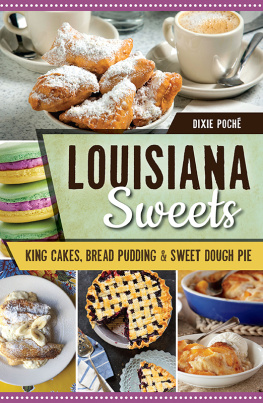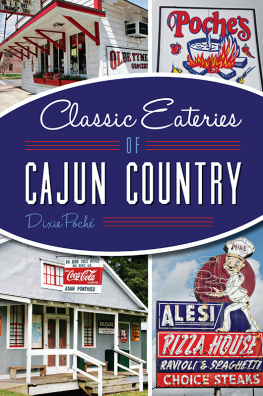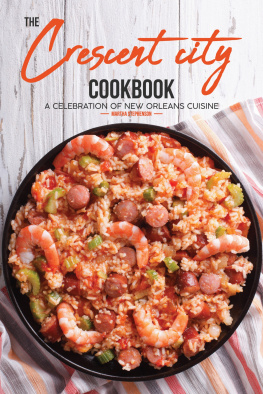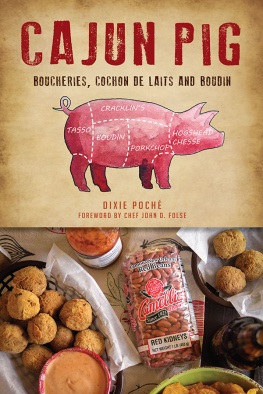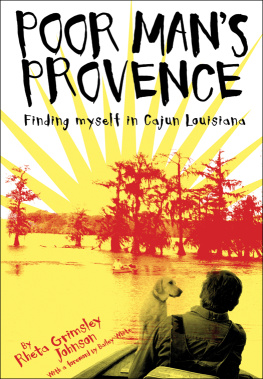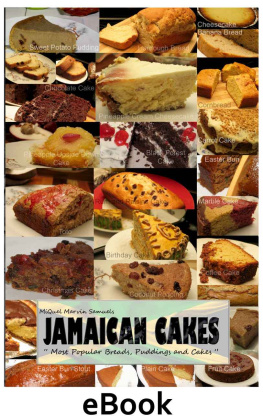

Published by American Palate
A division of The History Press
Charleston, SC
www.historypress.net
Copyright 2017 by Dixie Poch
All rights reserved
Front cover, clockwise from top: Louisianas state doughnut, the beignet. Courtesy of the Louisiana Department of Culture, Recreation and Tourism; country-style peach cobbler. Courtesy of Del Monte Foods, Inc.; blueberry pie. Courtesy of the US Highbush Blueberry Council; Bananas Foster pain perdu. Courtesy of Elizabeths Restaurant; macaron cookies during carnival season at Sucre in New Orleans. Courtesy of @hanafoto.
First published 2017
e-book edition 2017
ISBN 978.1.43966.217.5
Library of Congress Control Number: 2017938338
print edition ISBN 978.1.46713.726.3
Notice: The information in this book is true and complete to the best of our knowledge. It is offered without guarantee on the part of the author or The History Press. The author and The History Press disclaim all liability in connection with the use of this book.
All rights reserved. No part of this book may be reproduced or transmitted in any form whatsoever without prior written permission from the publisher except in the case of brief quotations embodied in critical articles and reviews.
Dedicated to my children, Roby and Renee.
Foreword
Of Louisianas cultural assets that make the state known worldwide, its cuisine in all its varied and delicious forms is by far the proverbial jewel in the crown. The early French, African, Spanish, German, Hungarian, Italian and other settlers who made their homes in Louisiana brought with them their respective culinary traditions and preserved them in their old-world authenticity or enhanced them with ingredients and ideas unique to the New World. The result is an ongoing yet adaptable legacy of good cooking, attractive presentation and joyful consumption.
Many readers have fond memories of experiencing a form of affectionate forced feeding when visiting grandparents and other elders. Regardless if one had just eaten a full meal, he or she was expected to eat again, and the gastronomic victim was never disappointed by the proffered food and drink in which tradition and love were key ingredients.
In Louisiana Sweets, Dixie Poch admirably presents a panorama of Louisianas best-known and most tempting sweets in their diverse richness. Cakes, pies, beignets, doughnuts, sweet breads, iced desserts, pralines, candy and fruit confections are just some of the delicious offerings featured on these pages along with the restaurants, bakeries, stores and other retail outlets where they may be found.
Supplementing the text is a wealth of vintage photographs, allowing the reader to step back in time and experience something of those beloved dining and entertainment places of yesteryear where many of the featured desserts and drinks gained wide renown.
Louisiana Sweets is an invaluable resource not only for the cuisiniere and gourmand but also for anyone interested in Louisiana, southern and American culture and ethnic traditions. In its informative yet lively and easy-to-read format, Louisiana Sweets is a fitting tribute to the desserts and drinks that have made palates rejoice and Louisiana cuisine famous for nearly three centuries.
BRIAN J. COSTELLO
Louisiana historian and author
New Roads, Louisiana
Acknowledgements
Louisianas sweets are near and dear to my heart. What attracted me to this topic is more than the wonderfully delicious taste. Researching the origins of king cake, beignets and doberge cake proved eye-opening. Many Louisiana bakers have fine-tuned recipes from other lands by dressing up the dish to make it their own masterpiece. Memorable stories came from venues such as Leahs Pralines of New Orleans, the humble cottage business of Annas Pies of Lake Charles, A-Bears Caf in Houma with its homemade bread pudding served in the midst of a Cajun music trio playing and the Easter basket memories evoked from the Gold Brick Egg of Elmer Chocolate of Ponchatoula.
What a delightful time I had sampling a treasure-trove of sweets here and there. Many thanks to Chris Jay at the Shreveport Bossier Convention and Tourist Bureau; historian Dr. Paul Leslie with Nicholls State University and Laurel Valley Plantation in Thibodaux; Joey Pierce with the Houma Visitors Center; photographer Travis Gauthier in Lafayette; Father Michael Russo with Our Lady of Fatima Catholic Church in Lafayette, who gave me an insiders view of the Sicilian tradition of St. Josephs Day Altar; and Quincy Cheek, extension agent for Rapides and Grant Parishes, for her recommendations. Also thanks to Madeline R. DeBlieux with the Natchitoches Convention and Visitors Bureau; Tom Braniff with Domino Foods, Inc.; Scott Scheuermann with Elmer Chocolate; Dr. Laura Lyons McLemore with the LSU-Shreveport Archives & Special Collections of Noel Memorial Library; Melissa Smith and Michael Leathem of the Louisiana State Museum; and Helen Thomas and Clifton Theriot with the Archives and Special Collections, Ellender Memorial Library of Nicholls State University.
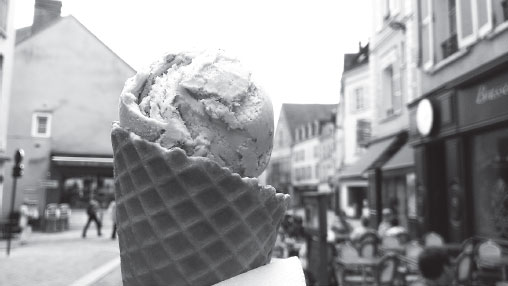
An ice cream cone promises a delightful way to cool off. Photo by author.
I was excited to visit Georgia Morel at Morels Restaurant in New Roads, an eatery that began life as a bait shop and was transformed into a great restaurant on False River. The Morels are truly dedicated to their community. When their restaurant was flooded in August 2016, everything had to be removed, cleaned, repaired and remodeled for a successful grand reopening a few months later.
Many recommendations were passed on to me during my hunt for wonderful dishes, eateries and old photographs. With some regret, I acknowledge that my taste buds were not able explore more, as Louisiana offers a flurry of sugary delights. I enjoyed every bit of my research at the luncheon counter. Lastly, merci beaucoup to my mother and aunts for their gift of memorable get-togethers and recipes.
Authors Note
Eat Dessert First
While growing up in a small community in southwest Louisiana, I shared many joyful Sunday afternoons with my Cajun cousins at my grandparents farm located down a gravel road. At the homestead of Mom and Pop Douce Huval (douce is French for sweet), we mischievously poked around the pigeonniere, circled around pecan trees and played hide-and-go-seek near the cistern. During the summer, while the grownups sat on the front porch visiting, the kids clamored to be first in line to turn the hand crank of the ice cream maker. The cool prize was sloppy scoops of creamy homemade vanilla ice cream loaded with cherries. Laughing, talking about politics, rocking away the afternoon and bragging about old times were part of the entertainment. My uncle often began a joke in English but switched to French when he got to the punchline. The musicians in the family pulled out the accordion and fiddle and sang Cajun tunes.
Later, when I was too old to dress in mask and costume, I continued my Halloween tradition of dropping by Aunt Alices house to enjoy her homemade praline or peanut butter fudge, which she handed out to all who visited her for trick or treat. My aunts and my mother, Gen, had their own sweet specialties. With the hint of baking drifting through open windows in our little country kitchen, it was no secret what Gen was up to on Saturday morningsmaking cinnamon rolls from scratch. The rolls were yeastbased, prepared from a recipe that was passed to Gen from the school cafeteria ladies. She spent time kneading the dough, patiently allowing it to rise. It was rolled out flat in a rectangular shape, brushed with butter and sprinkled with a sugar-cinnamon mix. Once rolled into a log shape, it was cut in two-inch slices, nestled in round cake pans and baked as my sisters and I checked on the progress by peeking through the glass oven door. Once the fat rolls were declared ready and hot out of the oven, they were cooled on a rack followed by a drizzling of a light icing of powdered sugar and milk. The scent of cinnamon continues to remind me of home.
Next page
